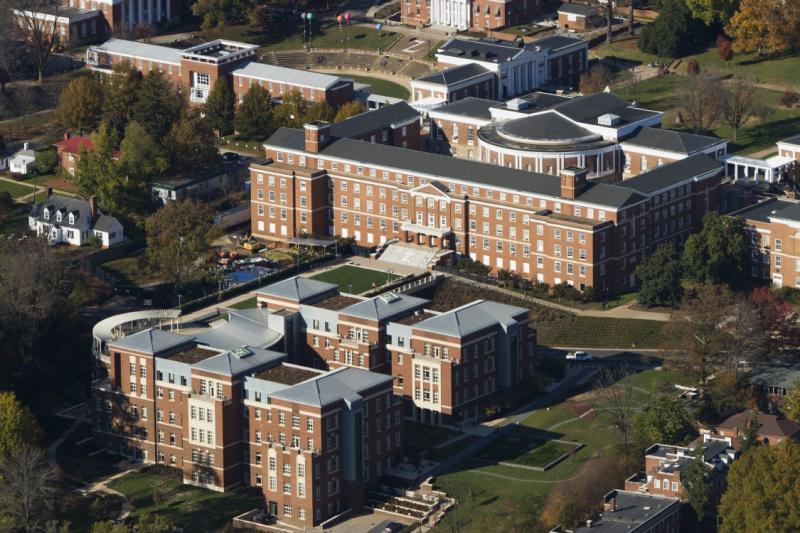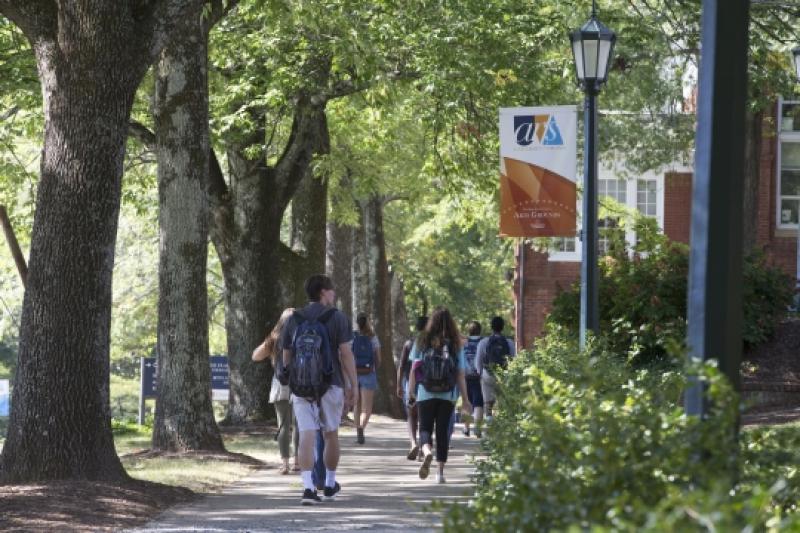Arts & Sciences as a "Green Workplace"

The College and Graduate School of Arts & Sciences plays a critical role in University sustainability. Our faculty, staff and students occupy more than 35 buildings, and 1.5 million gross square feet on Grounds. As a significant consumer of resources at the University, the College is seeking to reduce its carbon footprint – as well as its annual facilities and utilities budget expense.
To put this in a financial perspective, the utilities bill for Arts and Sciences in 2015-16 is $8.4 million. The University and Arts and Sciences are partnering to reduce this cost, which will enable the College to redirect savings to support core programs as well as new initiatives throughout Arts and Sciences.

Towards that end, a newly piloted major sustainability project at Clark Hall will improve building performance and significantly reduce utilities use, and proposed improvements at Gilmer Hall and the Chemistry Building planned with upcoming renovations are projected to save well over $1 million in annual utilities usage.
The College and Graduate School’s departments and programs can contribute substantially to this effort. Programs developed by the University’s Office for Sustainability provide guidance towards reducing our consumption and carbon footprint.
Green Workplace Program
The A&S Dean’s Office has joined the University’s new Green Workplace Program developed by the Office for Sustainability. The program aims to improve resource efficiency and to promote sustainable practices across Grounds. To motivate University workplaces to implement as many as 60 sustainable practices, the Green Workplace Program is awarding gold-, silver- and bronze-level certifications based on the number of reported actions taken and the anticipated level of effort required for each one.
Credits range from one to five points for each action, and the credit categories include energy, transportation, purchasing, zero-waste, community, health, food, and innovation. Many actions, such as procuring office supplies from the ROSE (Reusable Office Supply Exchange) Program and converting to paperless processes will earn credits. The program’s primary goals are to change habits related to energy consumption and to create a healthy work environment, but departments may also find that they are able to enjoy real cost savings as they implement new practices.

Green Labs Program
While labs are a critical component of much of the innovative research being conducted at UVA, they can be incredibly resource-intensive. Labs account for only 16 percent of the square footage at the University, but they are responsible for more than one-third of the energy use. (Did you know that each fume hood uses approximately as much energy as three houses?)
To address this, the Office for Sustainability and the Green Labs Working Group are developing a Green Labs Program that can help researchers adopt more sustainable practices. Though the GLP is still in development, labs in Clark Hall will be able to participate in a pilot phase this fall and winter. Interested researchers, lab staff, and students are encouraged to join the Green Labs Working Group to help develop the rating criteria.
Arts & Sciences Sustainability
Our goal is to create a vibrant community among Arts and Sciences students and employees alike, and the College encourages programs and departments to join in supporting a more efficient, healthy, and sustainable environment at UVA and beyond. To start a new green team (or just to learn more about improving your workplace), please visit http://sustainability.virginia.edu/programs/greenworkplace.html. Contact Sarah Stanton, Space Manager in the Dean’s Office, with questions.




